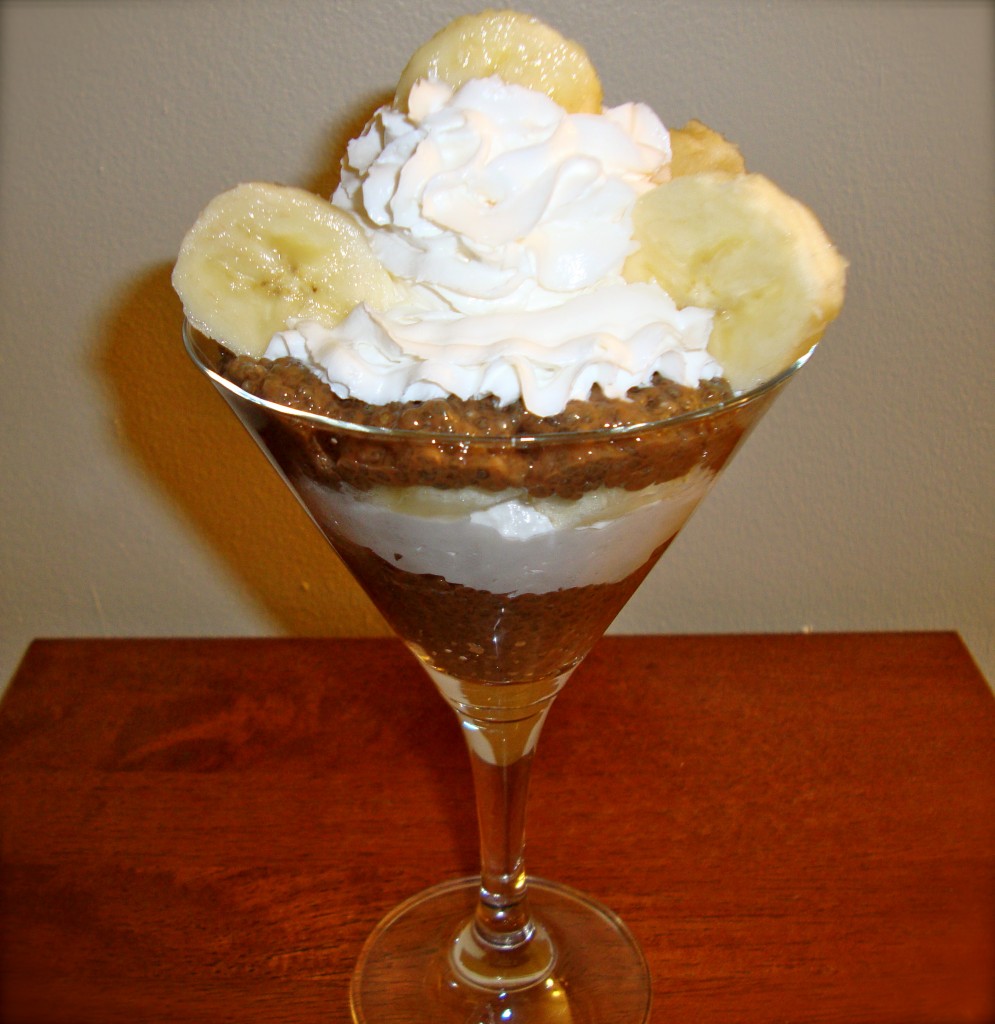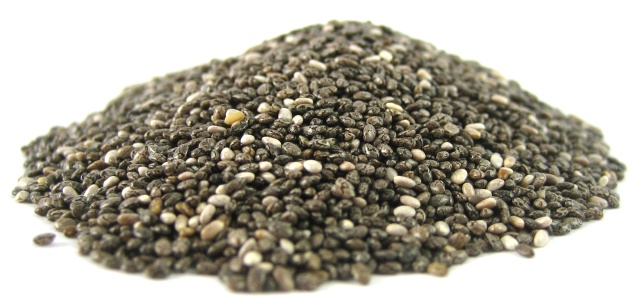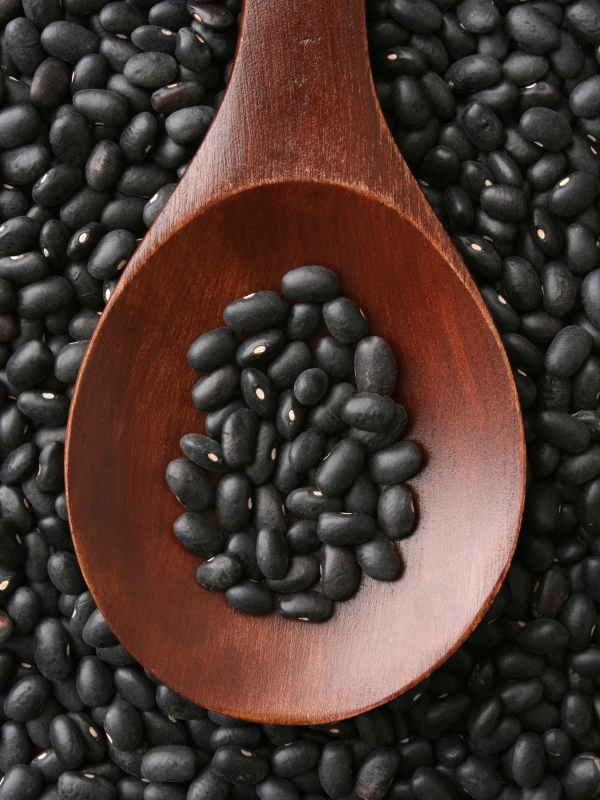x
Ch-Ch-Ch- CHIA!
x
I bet you didn’t know that the same little seeds sprouting from your chia pet are actually MAGICAL seeds…
x
Don’t laugh.
It’s true! (Plus they make a heck of a dessert…did you see above?).
Chia seeds are chock full of amazing health benefits. And that’s exactly why they have been a SECRET SUPER-FOOD primarily known among the health and fitness savvy for years…
UNTIL NOW!
These little miracle seeds are finally becoming more mainstream now that health conscious people everywhere have discovered their fabulous health benefits…but what is it exactly that makes chia seeds so unique?
Well, I’ll tell you!
But first off, let’s start with a brief history lesson ![]() .
.
x
Native to Guatemala and both the southern and central parts of Mexico, chia (Salvia Hispanica) is a flowering plant that belongs to the mint family. The chia plant is harvested for its highly nutritious, multi-colored, and speckled seeds. Evidence suggests that these seeds were used as far back at 3500 BC! Before the Spanish Conquest of Latin America began in 1519, chia seeds were a vital crop and food source for the Aztecs and Mayans because of their incredible stamina and energy-providing abilities. In fact, it is believed that Aztec and Mayan warriors and runners were able to sustain themselves on just a handful of these little seeds a day! It is quite fitting, then, that the name ‘chia’ is derived from the Mayan word for ‘strength’.
The Aztec and Mayan civilizations regularly consumed chia seeds either on their own, by grinding them into flour, drinking them mixed with water, or pressing them for their oil. Unfortunately, after the Spanish Conquest of Latin America, chia plants disappeared for about 500 years. This was because the Spanish settlers prevented the practice of any native traditions, including the farming of native crops. Instead, the Spanish used the natives’ land to harvest their own crops (namely barley and wheat). However, some chia plants did survive as a minor crop in Guatemala, Mexico and Nicaragua– and now, years later, THEY’RE BACK!
X
Health Benefits of Chia Seeds:
- They deliver the maximum amount of nutrients with the least amount of calories.
- Chia seeds have 2x the protein of any seed or grain.
- They have 3x as much iron as spinach.
- Chia seeds increase stamina and energy over long periods of time (they are becoming a favorite among marathon runners!)
- They can aid in weight loss (chia seeds absorb up to 7x its weight, and expand to curb appetite/make you feel full).
- They are rich in alpha-linolenic acid, also known as ALA.
- Chia seeds can reduce overall cholesterol and increase good cholesterol (HDL)
- They are heart-healthy in that they have one of the most concentrated sources of Omega-3 than in any other food (even salmon).
- They also contain high amounts of Omega-6 (both Omega-3 fatty acids and Omega-6 fatty acids cannot be made internally and must be obtained through diet).
- They contain the essential minerals such as sodium, phosphorus, potassium (2x as much as bananas), manganese, and calcium (5x more than in milk!).
- They are FULL of antioxidants (3x as much as blueberries!).
- Chia seeds have 11 grams of dietary fiber in one ounce (the soluble fiber improves digestion and helps to reduce glycemic spikes)
- They do not need to be ground like flax seeds in order to reap their benefits.
- Chia seeds have a long shelf life and do not spoil as quickly as other seeds (like flax-seed).
- They soothe heartburn and calm the digestive system due to the gel-like substance they form when mixed with a liquid (this is especially helpful for people with IBS).
- Chia can relieve itchy skin (in oil form)
- They can help to balance blood sugar/prevent glucose spikes
X
But the BEST part of all? You can use chia seeds to make a DELICIOUS and HEALTHY DESSERT!
x
When chia seeds are soaked in water and sit for about 20 minutes, they form a jelly-like substance. The soaked chia is perfect to use as an egg-replacement (1 tablespoon chia seeds + 3 tablespoons water), as a drink (chia fresca), or (my personal favorite!) as a PUDDING! (You can also toss chia seeds on salads, in protein shakes, mixed into yogurt, or on their own. There aren’t any rules. Go crazy!).
While the texture may be hard to get used to at first, I promise you…the health benefits of chia seeds are worth it! This pudding recipe below is a guilt-free option for a healthy dessert or snack, and even better…it’s delicious!
x
Chocolate-Hazelnut Chia Pudding
Ingredients:
- 3/4 cup unsweetened almond milk (I use the unsweetened version of Vanilla Almond Breeze)
- 1/4 cup chia seeds (I have seen chia seeds at Trader Joe’s, Whole Foods, and Shaw’s…but I bet you can get them at most grocery stores nowadays).
- 1 tablespoon of all-natural cocoa powder (feel free to add more if you want it extra chocolate-y!)
- 2 packets of stevia (or 2 teaspoons of another all-natural sweetener)
- 1/2 teaspoon of all-natural hazelnut extract (You can find this at Whole Foods or online, but vanilla, almond or maple extract would also do–just reduce the almond extract by half…it’s quite strong!)
Directions:
- Pour the chia seeds in a bowl.
- Mix the almond milk, cocoa powder, hazelnut extract, and stevia in a blender.
- Pour the mixture over the chia seeds– stir for a few seconds–let it sit for at least 20 minutes (do not mix while the seeds are soaking).
- After the 20 minutes are up the seeds should have absorbed all the liquid (if not, soak a little longer) and have a jelly-like texture. The pudding will get even thicker if you let it sit in the fridge for an hour or so.
- Mix very well and serve cold.
x
If you want, feel free to fanci-fy your chia pudding like me! You can layer it with any fruit you’d like (strawberries anyone?) and Soyatoo vegan whipped cream to make a trifle-like dessert. Anyone on the Scottish side of my family know how much I LOVED trifle as a little girl :).
x
Hmm. That gives me an idea…
I just may need to create a vegan version of my favorite childhood dessert very soon…
x
Healthfully yours,
Ashley Michelle
Sources:
Livestrong: The benefits of chia seeds
Livestrong: Medicinal healing properties of chia seeds
Powerful health benefits of chia seeds
The superfood that could change your body


